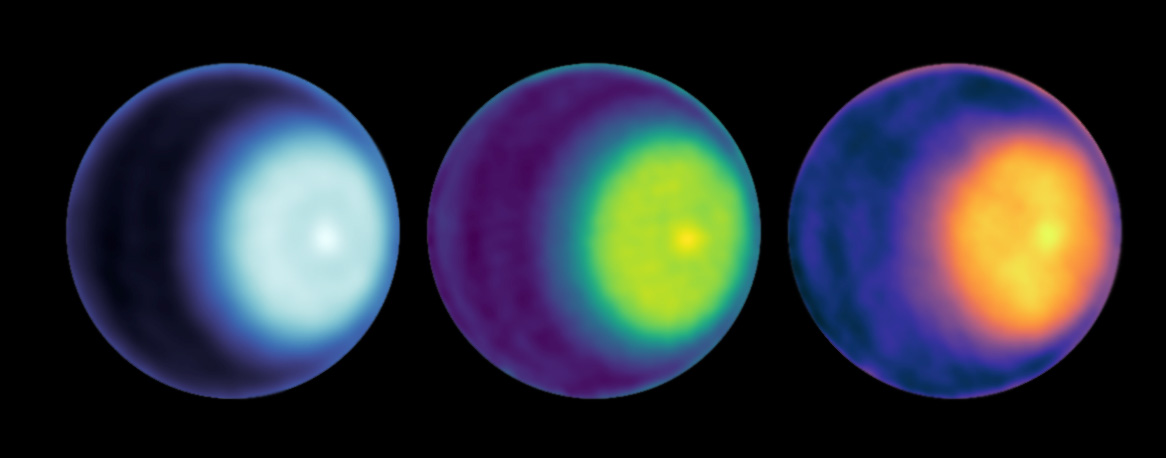When NASA’s Voyager 2 passed Uranus several decades ago, it discovered that the blue gas ball which rolls around the Sun had a vortex around its southern pole. However, studies showed no changes in the temperature, leading scientists to believe that Uranus’ atmosphere was fairly inert. Now, as Uranus shows off more thanks to its current orbit, astronomers are able to paint a very different picture.
According to new observations detailed in a paper published in Geophysical Research Letters, Uranus most likely has a polar vortex swirling around its north pole, too. These types of cyclones have been observed on almost every other planet in our solar system, save for Mercury, which NASA explains has no “substantial” atmosphere, making it impossible to form a vortex.
What’s most important, though, is that this discovery of a vortex at Uranus’ northern pole tells us more about the planet’s story. “It’s a much more dynamic world than you might think,” Alek Akins of NASA’s Jet Propulsion Laboratory in Southern California explained in a statement. “It isn’t just a plain blue ball of gas.”

Calls to explore Uranus more extensively have only grown in recent years, with scientists practically begging to probe Uranus and learn more about the planet known as Neptune’s twin. Despite all those pleas, though, an actual mission to Uranus still seems a good distance away, which means discoveries like this vortex are the only way we’ll learn more about the rolling gas giant.
The observations detailed in the new paper were conducted using the Very Large Array in New Mexico, which allowed the researchers to peer below the planet’s clouds. By doing this they were able to determine the cause of the vortex on Uranus, citing circulating air that seems to be warmer and drier than the air found around the rest of the ice giant’s atmosphere.
These new observations went deeper into Uranus’ atmosphere than ever before, NASA says. Unlike hurricanes, which drift across the planet, cyclones like the one found on Uranus do not drift. They stay where they are perpetually, evolving and changing based on the way the air in the atmosphere changes. Future studies of this vortex on Uranus will hopefully teach us more about the ice giant.








